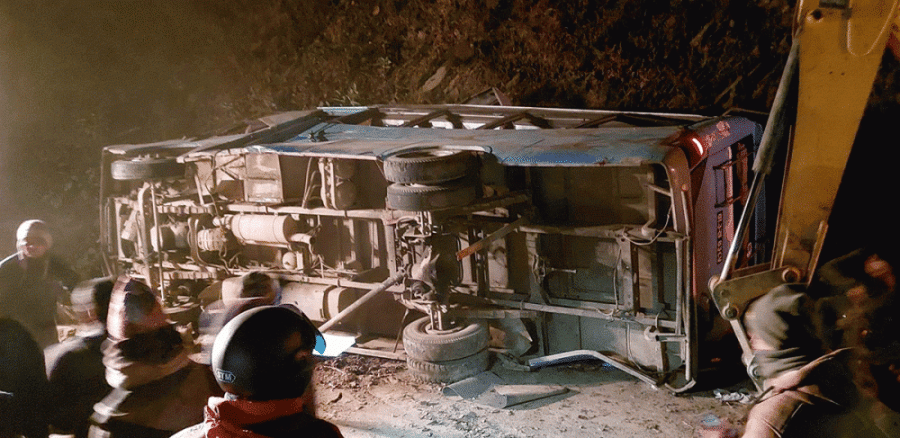Editorial
Preventable deaths
There is a need to inculcate civic sense among drivers, pedestrians and all stakeholders on the road.
The death toll in the bus accident in Bethanchok Municipality of Kavre on Tuesday has reached 18 while 21 people who sustained injuries are being treated. The bus was carrying passengers attending bratabandha celebrations. The accident occurred just a day after 12 people were killed in a jeep accident in Chhedagad Municipality of Jajarkot district. The jeep was ferrying passengers on the way to wedding celebrations. The celebrations turn into mourning in a jiffy, due to just one wrong move of a driver, or a flawed road design.
In 2020, a whopping 4,654 people were killed in road accidents in Nepal, which accounts for 2.9 percent of total deaths in the country. With many more people getting injured, the total loss, including deaths, material loss and emotional turmoil is extraordinary, apart from the wastage of 0.8 percent annual gross national product. Sadly, these are preventable deaths and injuries. And yet, road accidents seem to be the norm rather than the exception as little is done to prevent them even though thousands of people lose their lives every year.
The focus has always been on after-the-fact action or compensation rather than long-term preventive measures. There is also little consistency in disciplinary action against overspeeding and overloading, further increasing the chances of road accidents. Traffic lights and road lamps are almost non-existent on highways, leaving it entirely up to the drivers to decide how to drive safely. Metropolitan cities are even more prone to road accidents, with Kathmandu valley registering almost 50 percent of all accidents in the country. While motorcycles contribute to the bulk of such cases in the cities, heavy vehicles such as buses and trucks do the same in highways and rural areas. Lack of hospitals along the highways also leads to many preventable deaths of accident victims.
Moreover, accidents occur due to a general lack of awareness about road safety even among those who have gotten their license after passing tests and trials. The vehicles that ply on city roads and highways alike are often functioning inefficiently, with little being done to check their safety standards as oversight mechanisms rarely function. Lack of insurance means the drivers of heavy vehicles involved in accidents in some cases reverse the vehicles to kill the victims rather than bear the burden of taking care of them for life if they survive. Clearly, the prevention of road accidents needs more than an awareness of road signs; there is a need to inculcate civic sense among drivers, pedestrians and all stakeholders on the road.
Thankfully, the action taken by the traffic police on drunk driving has over the years brought about a positive change, with a drastic decline in the number of road accidents. The reason the programme has been successful is primarily because it has continued for almost a decade. This modus operandi needs to be replicated in other areas of road safety, including overspeeding and insufficient care of vehicles.




 8.12°C Kathmandu
8.12°C Kathmandu














